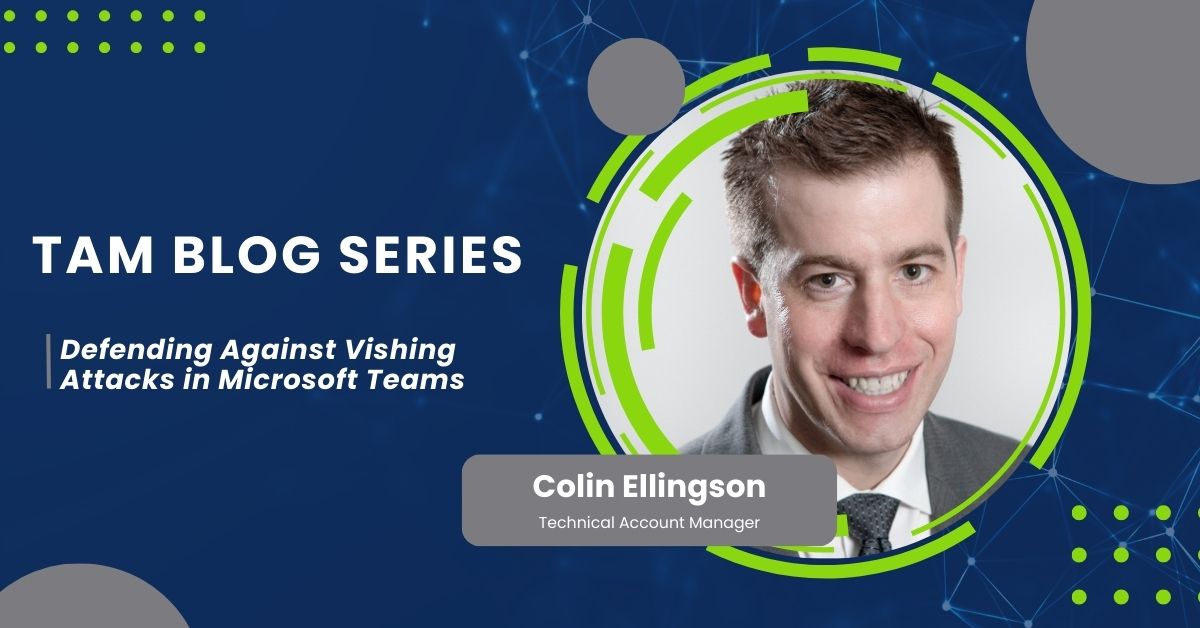By Colin Ellingson, Fulton May Solutions
Vishing attacks via Microsoft Teams are emerging as one of the most dangerous social engineering threats of 2025. Unlike traditional phishing emails, these attacks leverage video conferencing tools to trick employees into surrendering access or sharing sensitive data. As cybercriminals refine their methods, businesses—especially those in finance, law, and R&D—must adopt a multi-layered security posture that blends AI-powered tools with human oversight to stay secure.
What Is Vishing—And Why Is It So Dangerous Now?
“Vishing” (short for “voice phishing”) isn’t new, but attackers have upped the stakes by bringing these scams into the virtual meeting room. Threat actors now create Microsoft Teams tenants and initiate unsolicited video calls to impersonate internal IT professionals, developers, or external vendors. Their goal? To convince unsuspecting employees to share their screens or grant remote access under the guise of troubleshooting or consulting work.
In one recent case, a client mistook a malicious actor for a Power BI developer. During a live Teams meeting, she began exposing key parts of her company’s infrastructure via screen share, only realizing midway that something felt off. While she ultimately cut the call, remediation was required, and the incident highlighted just how effective this new technique has become.
Why Vishing Works: The Psychology of Trust and Urgency
Vishing attacks are successful not because of sophisticated code, but because of social engineering. Attackers exploit the innate human instinct to trust, respond quickly, and avoid conflict, especially when they believe they’re speaking with internal IT or leadership-approved vendors.
The danger is amplified when paired with:
- Familiar tools: Calls arrive via Teams, a platform employees use daily.
- Urgent context: Attackers often claim there’s a security flaw or urgent issue that requires immediate access.
- Visual legitimacy: Fake backgrounds, profile photos, and professional demeanor create a false sense of legitimacy.
The goal here is to get you to do something quickly and without thinking about it, and you when you realize your mistake, it’s often too late.

Protecting Your Organization: Practical Defenses
Preventing vishing attacks requires a layered defense that integrates technology, policy, and culture:
1. Harden Microsoft Teams Settings
- Disable external calls unless absolutely necessary.
- Require IT approval for new vendor engagements via Teams.
2. Enforce Verification Protocols
- Mandate Phish resistant Multi-factor Authentication for any Vendor-requested remote access.
- Establish a policy that no wire transfers or credential sharing are done during live calls unless pre-approved and verified.
3. Adopt Best-in-Class Security Tools
- Mimecast for advanced email threat protection and BEC defenses.
- Arctic Wolf for MDR (Managed Detection & Response), pairing AI with human analysts to drastically reduce false positives.
- KnowBe4 for ongoing employee cyber awareness training.




Fulton May, a proud partner of Microsoft, Arctic Wolf, Mimecast, and KnowBe4, integrates these solutions to provide comprehensive security tailored to small and mid-sized businesses.
4. Create a Culture of Early Reporting
- Normalize incident reporting.
- Ensure leadership emphasizes that speed and transparency matter more than blame.
5. Encrypt Sensitive Data at Rest
- Prevent attackers from exploiting historical email threads by securing inboxes with Microsoft Azure Rights Management and similar tools.
Strategic Advice: Rethinking Cybersecurity Investments in 2025
For SMBs, cybersecurity investment should prioritize:
- Solutions that combine AI and human response—automation alone isn’t enough.
- Proactive employee education that reflects modern threat vectors.
- Defined processes that remove human fallibility from wire transfers and sensitive approvals.
Companies should be building a strong posture that prevents, detects, and responds.
The Bottom Line on Vishing
Vishing attacks via Microsoft Teams are no longer theoretical—they’re happening today, and they’re working. Your team’s ability to recognize, report, and respond to these threats hinges not only on technology but also on training, trust, and transparency.
Fulton May Solutions is here to help you build that posture, from security tools to strategic partnerships, employee training to emergency response. In cybersecurity, the best success stories are the ones you never hear about, because the threat never made it through the front door. Contact us today to fortify your defenses.





